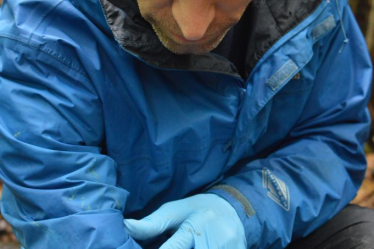Rae Harris ’25
Editor-in-Chief
Aristotle, often considered the “Father of Biology” for his extensive work on animal and plant physiology, wrote in his work De Anima that “the soul never thinks without a mental image.” This claim suggests that imagination, or the ability to produce images within the mind, is an essential component of thinking. For most, this statement will ring true, but for others it only brings confusion.
It is clear that Aristotle’s claim was incorrect. Not all minds are alike and not all people process thoughts in the same way. In fact, there are instances in which individuals cannot conjure up mental images at all. This condition –– known as “aphantasia” — is derived from ancient Greek words that translate to “without imagination” or “without images.” The condition can either be congenital (present from birth) or come as a result of brain damage. As of 2023, according to a review paper entitled “Insights into embodied cognition and mental imagery from aphantasia” by Muraki et al., approximately 4% of the general population has aphantasia.
People with aphantasia, known within the community as “aphants,” experience the condition on a spectrum. Some people cannot conjure mental images but can form impressions based on other senses — auditory, motor, tactile, taste or smell — while others cannot form any mental impressions at all. Like most abilities, visualization rests on a sliding scale.
According to the paper “Aphantasia and hyperphantasia: exploring imagery vividness extremes” by Adam Zeman, mental imagery plays a role in many daily functions. These functions include daydreaming, recollecting past events, problem-solving, navigating environments and reading descriptive literature.
How can this lack of mental images affect cognitive processes? Muraki et al. suggested aphants show “inconsistent deficits in visual and verbal short-term memory” which “might be associated with more challenging memory tasks or object-specific memory deficits in visual memory.”
Deficits in episodic, or event-based, memory and autobiographical memory have been reported in aphants with fewer details and less retrieval of sensory or emotional content from the memory. Muraki et al. also suggested that aphants can have “reduced physiological responses to reading passages of text describing fearful situations, indicating that imagery might play a role in emotion processing.” Aphants typically reported having “fewer dreams and less vivid emotions and awareness during dreams.” Interestingly, people unable to voluntarily conjure mental images can experience dreams through visual representations, suggesting that alternative neural pathways are utilized for dreams and visualization.
Instances of aphantasia were reported as early as 1880. The British psychologist Sir Francis Galton’s “breakfast table questionnaire” — which asked participants to rate the “illumination, definition and coloring” of their imagined breakfast table — revealed that “some of his participants, often ‘men of science,’ protested that ‘mental imagery was unknown to them.”’ Despite this, research into the condition has increased only in recent years. In some modern studies, aphantasia acts as a “natural knockout” for mental imagery pathways and allows for greater study into the “causal role of mental imagery in other cognitive processes such as conceptual processing.” An increased awareness of aphantasia also forces us to consider our ways of thinking and creating a space for a variety of cognitive practices. People with mental imagery may use this method to aid in memory tasks or general learning. Without this aid, aphants have developed alternative methods of thinking. The “Aphantasia Beginner’s Guide” on Aphantasia Network’s website distinguishes between “visualizers” and “conceptualizers,” those who paint pictures in their minds and those who dive into the ideas and concepts instead of visual scenes.


